Piyapat Saranrittichai
Attention Is All You Need For Mixture-of-Depths Routing
Dec 30, 2024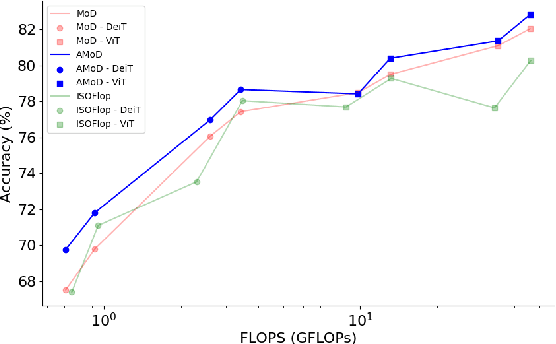
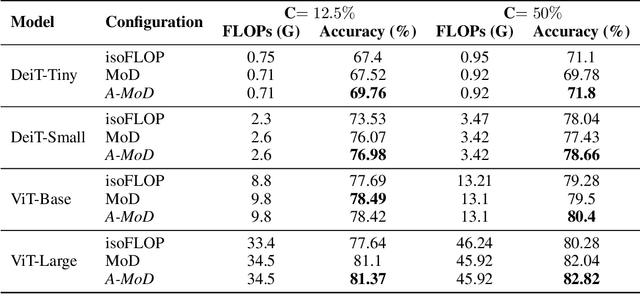
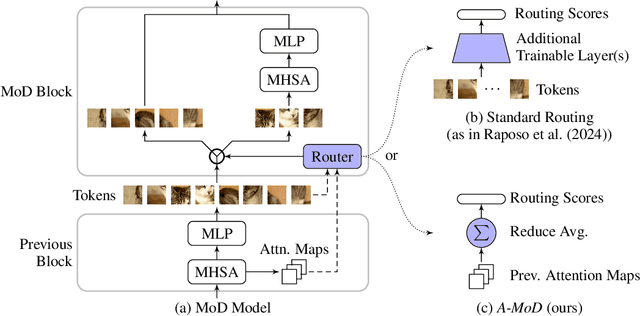

Abstract:Advancements in deep learning are driven by training models with increasingly larger numbers of parameters, which in turn heightens the computational demands. To address this issue, Mixture-of-Depths (MoD) models have been proposed to dynamically assign computations only to the most relevant parts of the inputs, thereby enabling the deployment of large-parameter models with high efficiency during inference and training. These MoD models utilize a routing mechanism to determine which tokens should be processed by a layer, or skipped. However, conventional MoD models employ additional network layers specifically for the routing which are difficult to train, and add complexity and deployment overhead to the model. In this paper, we introduce a novel attention-based routing mechanism A-MoD that leverages the existing attention map of the preceding layer for routing decisions within the current layer. Compared to standard routing, A-MoD allows for more efficient training as it introduces no additional trainable parameters and can be easily adapted from pretrained transformer models. Furthermore, it can increase the performance of the MoD model. For instance, we observe up to 2% higher accuracy on ImageNet compared to standard routing and isoFLOP ViT baselines. Furthermore, A-MoD improves the MoD training convergence, leading to up to 2x faster transfer learning.
AutoCLIP: Auto-tuning Zero-Shot Classifiers for Vision-Language Models
Sep 29, 2023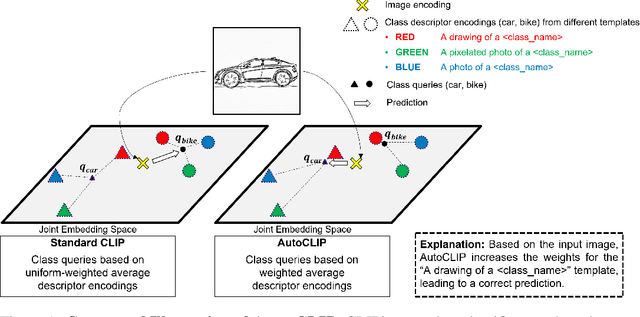

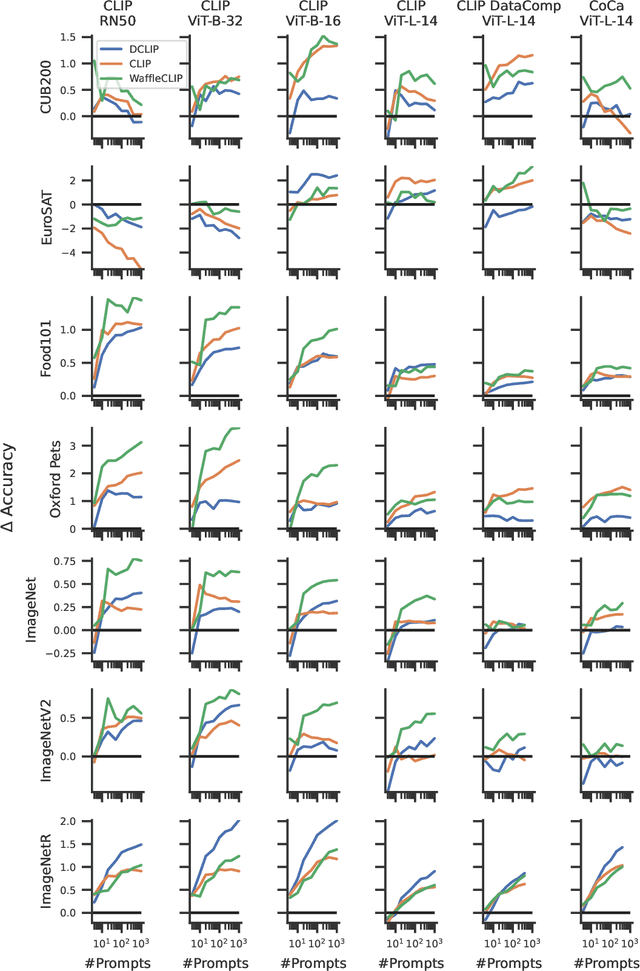

Abstract:Classifiers built upon vision-language models such as CLIP have shown remarkable zero-shot performance across a broad range of image classification tasks. Prior work has studied different ways of automatically creating descriptor sets for every class based on prompt templates, ranging from manually engineered templates over templates obtained from a large language model to templates built from random words and characters. Up until now, deriving zero-shot classifiers from the respective encoded class descriptors has remained nearly unchanged, i.e., classify to the class that maximizes cosine similarity between its averaged encoded class descriptors and the image encoding. However, weighing all class descriptors equally can be suboptimal when certain descriptors match visual clues on a given image better than others. In this work, we propose AutoCLIP, a method for auto-tuning zero-shot classifiers. AutoCLIP tunes per-image weights to each prompt template at inference time, based on statistics of class descriptor-image similarities. AutoCLIP is fully unsupervised, has very low computational overhead, and can be easily implemented in few lines of code. We show that AutoCLIP outperforms baselines across a broad range of vision-language models, datasets, and prompt templates consistently and by up to 3 percent point accuracy.
Zero-Shot Visual Classification with Guided Cropping
Sep 12, 2023Abstract:Pretrained vision-language models, such as CLIP, show promising zero-shot performance across a wide variety of datasets. For closed-set classification tasks, however, there is an inherent limitation: CLIP image encoders are typically designed to extract generic image-level features that summarize superfluous or confounding information for the target tasks. This results in degradation of classification performance, especially when objects of interest cover small areas of input images. In this work, we propose CLIP with Guided Cropping (GC-CLIP), where we use an off-the-shelf zero-shot object detection model in a preprocessing step to increase focus of zero-shot classifier to the object of interest and minimize influence of extraneous image regions. We empirically show that our approach improves zero-shot classification results across architectures and datasets, favorably for small objects.
Multi-Attribute Open Set Recognition
Aug 14, 2022
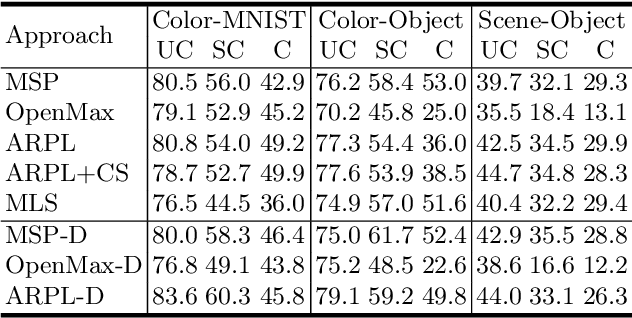

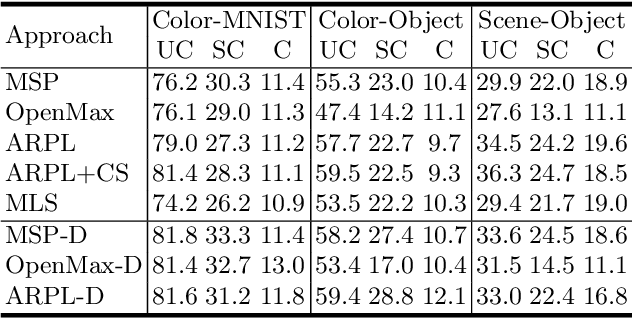
Abstract:Open Set Recognition (OSR) extends image classification to an open-world setting, by simultaneously classifying known classes and identifying unknown ones. While conventional OSR approaches can detect Out-of-Distribution (OOD) samples, they cannot provide explanations indicating which underlying visual attribute(s) (e.g., shape, color or background) cause a specific sample to be unknown. In this work, we introduce a novel problem setup that generalizes conventional OSR to a multi-attribute setting, where multiple visual attributes are simultaneously recognized. Here, OOD samples can be not only identified but also categorized by their unknown attribute(s). We propose simple extensions of common OSR baselines to handle this novel scenario. We show that these baselines are vulnerable to shortcuts when spurious correlations exist in the training dataset. This leads to poor OOD performance which, according to our experiments, is mainly due to unintended cross-attribute correlations of the predicted confidence scores. We provide an empirical evidence showing that this behavior is consistent across different baselines on both synthetic and real world datasets.
Overcoming Shortcut Learning in a Target Domain by Generalizing Basic Visual Factors from a Source Domain
Jul 20, 2022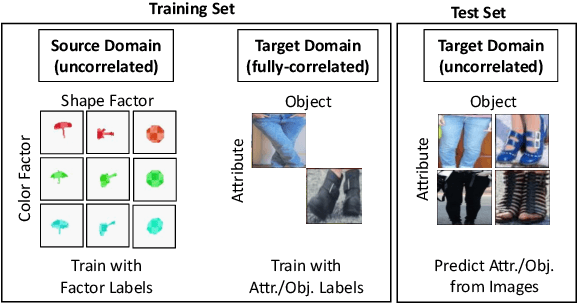
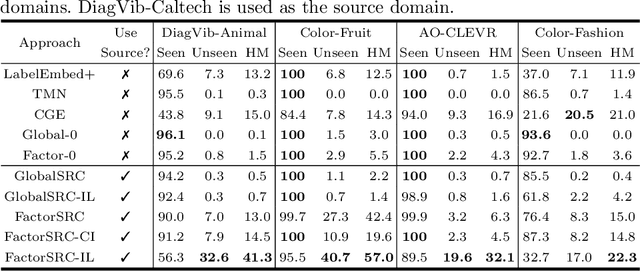
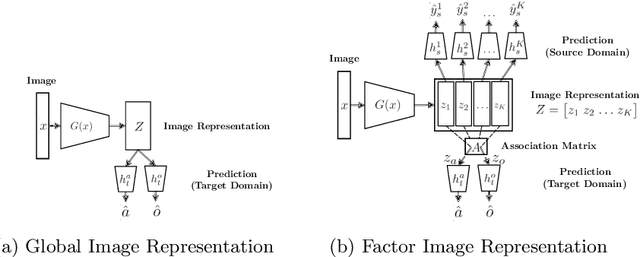

Abstract:Shortcut learning occurs when a deep neural network overly relies on spurious correlations in the training dataset in order to solve downstream tasks. Prior works have shown how this impairs the compositional generalization capability of deep learning models. To address this problem, we propose a novel approach to mitigate shortcut learning in uncontrolled target domains. Our approach extends the training set with an additional dataset (the source domain), which is specifically designed to facilitate learning independent representations of basic visual factors. We benchmark our idea on synthetic target domains where we explicitly control shortcut opportunities as well as real-world target domains. Furthermore, we analyze the effect of different specifications of the source domain and the network architecture on compositional generalization. Our main finding is that leveraging data from a source domain is an effective way to mitigate shortcut learning. By promoting independence across different factors of variation in the learned representations, networks can learn to consider only predictive factors and ignore potential shortcut factors during inference.
DiagViB-6: A Diagnostic Benchmark Suite for Vision Models in the Presence of Shortcut and Generalization Opportunities
Aug 12, 2021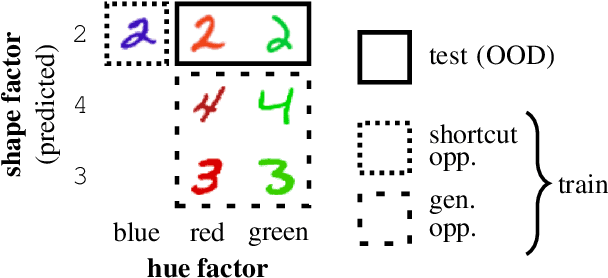
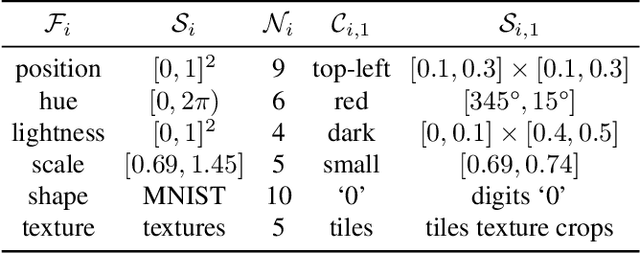
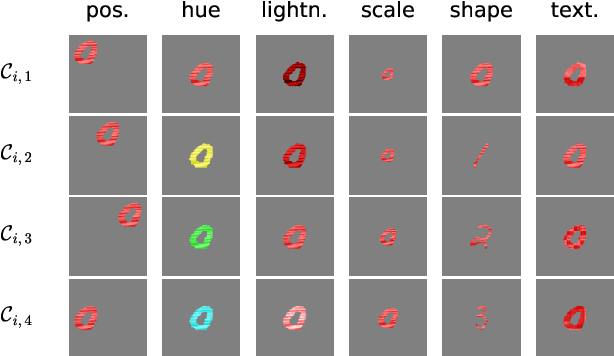
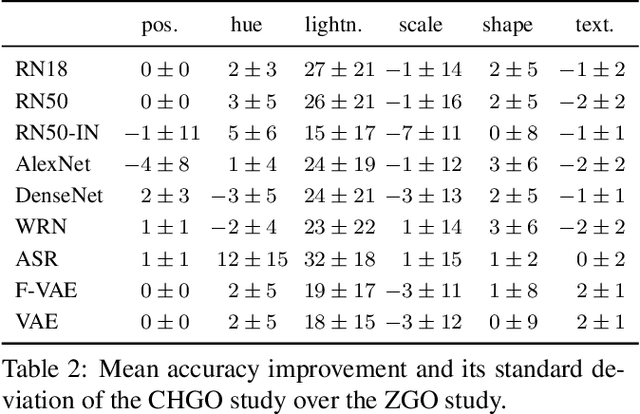
Abstract:Common deep neural networks (DNNs) for image classification have been shown to rely on shortcut opportunities (SO) in the form of predictive and easy-to-represent visual factors. This is known as shortcut learning and leads to impaired generalization. In this work, we show that common DNNs also suffer from shortcut learning when predicting only basic visual object factors of variation (FoV) such as shape, color, or texture. We argue that besides shortcut opportunities, generalization opportunities (GO) are also an inherent part of real-world vision data and arise from partial independence between predicted classes and FoVs. We also argue that it is necessary for DNNs to exploit GO to overcome shortcut learning. Our core contribution is to introduce the Diagnostic Vision Benchmark suite DiagViB-6, which includes datasets and metrics to study a network's shortcut vulnerability and generalization capability for six independent FoV. In particular, DiagViB-6 allows controlling the type and degree of SO and GO in a dataset. We benchmark a wide range of popular vision architectures and show that they can exploit GO only to a limited extent.
 Add to Chrome
Add to Chrome Add to Firefox
Add to Firefox Add to Edge
Add to Edge